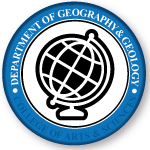Document Type
Article
Publication Date
2-2013
Publication Title
Aether: the Journal of Media Geography
Volume
11
First Page
1
Last Page
17
Abstract
Writing from Nebraska’s eastern edge, my mind’s eye drawn to the Platte River (west and south of me), I consider landscape, history, and the media. The Oto called the river “Nebraskier” which means flat or shallow, giving us the name of the state.1 Early accounts describe the Platte as “a mile wide and an inch deep” and “too thick to drink, too thin to plow”; Washington Irving described it as “the most magnificent and useless of rivers” (Allin 1982, 1). But to dismiss this river is to judge too quickly. As the river gains momentum, growing in size, it is covering space and time. Not a single flow but multiple flows. As a classic braided stream, it carries significant sediment from its origins in the foothills of the Rockies. Crossing the Plains and growing in size, it slows in speed, allowing deposition to occur, creating the sand bars and islands that are its braids. The river breaks into multiple flows that merge and split again. Like the Platte, the concepts of landscape, history and the media flow back and forth. They parallel each other, merge to form new streams, split up and then rejoin, reconfigure in new formations. None is discreet but rather have flowed together, now here and later there. At times they are joined, at other times they split, but always they have been traveling together across space and time.
Recommended Citation
Dando, Christina E., "Landscape, History and the Media: An Introduction" (2013). Geography and Geology Faculty Publications. 10.
https://digitalcommons.unomaha.edu/geoggeolfacpub/10

